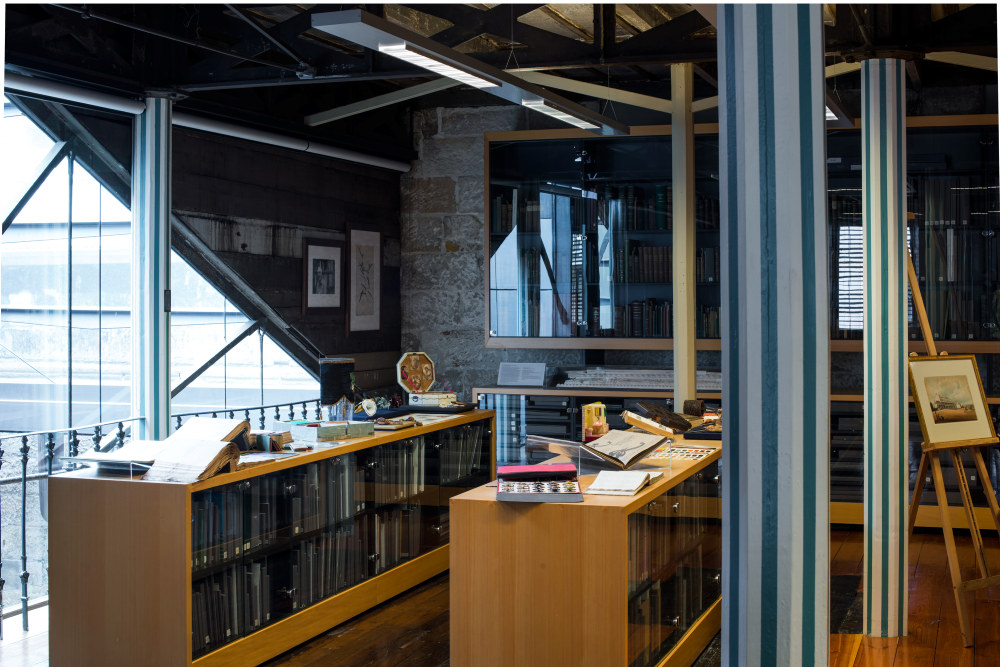The Paul Kafka (Vienna) Archive
This article first appeared in the winter 2012 edition of Insites magazine
The Paul Kafka (Vienna) Archive: our latest acquisition
Written by Megan Martin, the former head of Collections & Access at Museums of History NSW
With the generous support of the Foundation for the Historic Houses Trust of NSW, we have recently acquired for the Caroline Simpson Library a significant archive of design drawings, sketches and photographs associated with furniture designer Paul E Kafka.
Paul Ernst Kafka (1907–1972) was born in Vienna, Austria, the son of a furniture manufacturer. He worked in his father’s factory from a young age, was later apprenticed to another furniture manufacturer in Vienna and is said to have studied furniture and interior design at the Kunstgewerbeschule in Vienna, now the University of Applied Arts Vienna.1 On the eve of World War II he emigrated to Australia with his wife, Ilse, and mother, Olga, arriving in Sydney, stateless, in August 1939.
Kafka found work at Ralph Symonds Ltd for a short time before establishing his own small furniture factory in Elizabeth Street, Redfern. After the war he moved to larger premises, a newly built factory equipped with modern machinery, in Botany Road, Waterloo, where he employed 20 to 30 cabinetmakers, offering top money and conditions. The Kafka factory produced ‘modern exclusive furniture’, combining European style and craftsmanship, designed to offer the maximum in comfort and to satisfy individual taste. Characteristics of his work were a high level of hand finishing and a distinctive use of highly figured veneers. Kafka’s clientele ranged from private home owners to corporations, and included a number of Sydney’s European-born modernist architects, among them Harry Seidler, Hugh Buhrich, Henry Epstein and Hugo Stossel.
In the Paul Kafka (Vienna) Archive are around 700 design drawings by a variety of designers of freestanding and built-in furniture and room settings and working drawings on butter paper. There are also around 300 mounted photographs of furniture and room settings, and miscellaneous loose photographs. Most of the drawings and mounted photos are of furniture that was fashionable in Austria in the late 1920s and the 1930s, when Kafka was apprenticed and cabinetmaking in Vienna.
The collection could be regarded as both a source of reference and a representation of Kafka’s work before coming to Australia. Curator and design historian Anne Watson believes the collection is ‘important for its association with Kafka’s early career and its cohesiveness as a record of the foundations of the style he transplanted to Australia’. She explains that ‘Kafka’s predilection for decorative veneers applied to furniture in a geometric Art Deco or Art Moderne style, evident in many of the drawings and photos, was continued in the work produced at his Waterloo workshop after the war’. This was, she observes, ‘a style that many of his clients, themselves European immigrants, were attracted to because of its links with their former lives in a very different cultural milieu’.
The Historic Houses Trust’s [now MHNSW] decision to purchase the Paul Kafka (Vienna) Archive was informed by our understanding of Kafka’s significance as one of Sydney’s most important postwar furniture makers. The archive adds great strength to our existing collection of Kafka-related material, most notably the built-in furniture produced for Harry Seidler at Rose Seidler House, 1948–50. In addition, the Caroline Simpson Library has important photo documentation of the Hillman House in Roseville, furnished by Kafka in 1950. We also have a collection of papers relating to Kafka’s own house in Eton Road, Lindfield, designed by Hugo Stossel in 1948, as well as some pieces of furniture from his house. And we have a large collection of drawings of furniture designs by George Surtees, a Hungarian-born designer who worked for Kafka in the 1960s. The Surtees collection, like the Paul Kafka (Vienna) Archive, deserves to be the focus of further research.
The scale of Kafka’s Sydney business, and our knowledge of his collaboration with important modernist émigré architects, suggests that this archive has the potential to substantially enrich our understanding of the European influence on the development of Australian domestic interiors in the early postwar period.
Notes
1. A Watson, ‘Kafka and Kalmar’, The Furniture History Society Australasia Journal, no 2, 2004, pp10–13.
Related

European designers in Sydney
A new exhibition takes a timely look at European designers in Sydney in the postwar years: their backgrounds, their Australian careers and their legacy
View more
Browse all
How to use the Caroline Simpson Collection
You will find items from the Caroline Simpson Collection in both our library catalogue and objects catalogue

